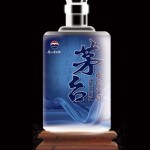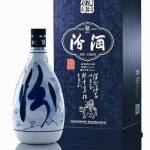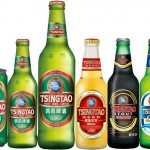The alcohol market in China is making a comeback
In 2011 China introduced the new law for punishing drunk drivers, the growth rate of overall alcohol market in China consumption lowered. Faced with stricter drunk driving testing and more severe punishments were there to be accidents, people intentionally choose not to drink alcoholic drinks before driving. However as people adapt to the laws, and with the rise of Didi Chuxing which makes a night out more convenient, the alcohol market in China has been making a comeback since 2012
High-end and Imported Wines in China Appearing More Frequently
Being regarded as the symbol of polite society or business elites, imported luxury wine such as Chivas Royal Salute(皇家礼炮), John Pope Hennessy(轩尼诗), Remy Martin(人头马) are gradually acquiring public acknowledgement, and we can frequently see them in business receptions or balls. Although the inflation in alcoholic drink in China was surprising 4.2% and the costs for imported alcoholic drinks in China rose greatly, it still sold well. Also these wine companies are trying to produce more varieties of products, which can well-satisfy the taste of Chinese people. French, in particular is doing well in alcohol market in China.
Enter the alcohol market in China through Strategic marketing
In the complex wine industry in China, wine producers are finding ways to win Chinese customers. Many companies use innovative strategies to focus on specific target markets. Companies are using innovative marketing strategies to focus on specific target markets. For example, the Bonny Doon Company, which uses an unusual selection of wine varieties along with unconventional label, designs to attract new market segments including China. Innovation varies from packaging, branding and advertising.
Surging Sales of alcoholic drinks in China on the Internet
Online B2C purchasing has become more and more popular in China in recent years, and this trend remains the same specifically for the wine in China. There are more online shops and online professional websites doing business related to mid-end wines or high-end brands. Due to the relatively short development history of online wine retailing, the market of online wine purchasing still has great potential.
There are more ways to source wines in China. A British wine research corporation, Wine Intelligence, conducted a market research in March 2016 based on more than 1000 Chinese wine consumers whom were from upper middle class. According to the ‘China Wine Market Landscape Report’ Wine Intelligence published based on the market research, more than 48 million consumers from the middle class consumed wine at least twice a year. Back in 2014, it was only 38 million. Meanwhile, the research also shown 49% consumers have purchased wine online in the past 6 months upon the research conducted. JD.com and T-mall were the most popular platform to source wines compared to other e-commerce platforms, according to the book ‘the competitive strategy of China wine industry’
Domestic Companies Cooperate to Make Themselves More Important in China’s Alcohol Market
We can say without any exaggeration that fierce competition exists in every industry of China. Since the market is widely spread, competition in the alcohol drink industry is intensive and is still heating up. To increase their own market powers, some companies threw themselves in merging or acquisitions. On typical example is the merge of Beijing Dragon Seal Wine and Beijing Red Star into Capital Wine Group. By enlarging the scale of themselves in this way, they enjoy more information, more high-technology, and more capitals for production. This trend again strengthens the competition and speeds up survival of the fittest and quitting of the ones that are not good enough.
High-end domestic alcohol brand such as Mao Tai (茅台) was still leading the domestic alcohol market. The stock has been rising and reached historical high in June 2019. It reached 1163 yuan by 13 December 2019. As the lead in Chinese domestic alcohol market, the growth also promotes sales and growth of other alcohol brands in China. As of 16 December 2019, Mao Tai sales revenue reached 100.3 billion yuan.
Meanwhile in June 2019, Koya Brandy Winery has officially opened in Yantai City. The company Zhang Yu (张裕) has made the first Brandy in China back in 1896 and in the market for sale since 1914 as KOYA Brandy. Koya Brandy is the pioneer in Chinese Brandy alcohol market and expect to enter international alcohol market in the future.
Digital transformation of China’s alcohol industry
In July 2019, Huawei, ZTE and other mobile internet high-tech companies led teams to visit Luzhou Laojiao, Wuliangye, and Maotai, respectively, in digital transformation, smart wineries, cloud computing, etc. On the other hand, it has launched comprehensive cooperation with liquor companies. The development of 5G technology will further change the development of the future liquor industry. In this regard, the industry believes that the use of the new network platform and 5G technology in the communications industry will reduce the difficulty and cost of equipment access to the brewery, transform data resources into data assets, bring out the core advantages of the industry, and continue to optimize and upgrade smart brewing. Technology may be one of the effective ways to enhance the competitiveness of Chinese liquor.
A Grow in Sales of Alcoholic drink in China in 2020
Market for imported wine has been expanding and reached 65.3% by 2018, thanks to the zero tax policy for New Zealand wine in 2012 and Chile wine in 2015.
In 2018, 4.9% of wine produced in China and 10% consumed in China. According to International Wine Association, the average consumption of wine in China is only 1.6L per person while the world average is 3.3L per person, which is twice as much. In 2019, China mainland has consumed 1.79 billion liter and was ranked the fifth in the world. Therefore, there is still a significant potential for the wine market to grow in China.
Author: Fengyu Du
Let China Paradigm have a positive impact on your business!
Listen to China Paradigm on iTunes





![[Podcast] China Paradigm 41: How to start a trendy wine chain in China](../wp-content/uploads/2019/05/Podcast-wine-chain-China-150x150.jpg)










